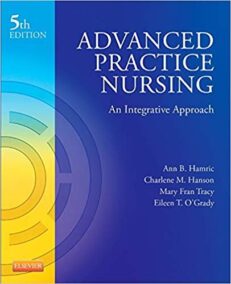Why don’t all children have access to qualified, capable, and loving teachers these days, given we know that they are the foundation of effective schools? It’s a pointed question. However, it has been pointing in the wrong direction for far too long. As if the quality issue could be resolved with a quantity solution, the generally held belief, which is often covered by the media, is that student learning suffers because there are simply not enough instructors, particularly excellent ones, to go around.
However, as is frequently the case, this popular wisdom proves to be both too conventional and insufficiently wise. Stunting rates of teacher turnover, or too many instructors leaving, are the main cause of our incapacity to sustain high-quality instruction. It’s like pouring water into a bucket with a fist-sized hole in the bottom.
The reality is that during their first few years of employment, a startling percentage of instructors are quitting their schools. Some are switching schools in search of better-paying or more appealing teaching positions. These “movers” accounted for the majority of people included in teacher turnover statistics until recently. Movers do not exhaust the whole pool of current instructors, but they do create gaps that need to be addressed through ongoing hiring and recruitment initiatives. But far too often, when teachers leave, they quit the profession entirely, and this trend is getting worse. According to the National Center for Education Statistics’ most current data, the number (or share) of “leavers” does not clearly exceed that of “movers” in public schools, though in private schools “leavers” are higher (source here: https://nces.ed.gov/pubs2024/2024039SummaryM.pdf).
It is now widely believed that “teacher shortages” are caused by things like rising student enrollment, reduced class sizes, and retirements, and that there is not enough new teacher supply to meet these demands. In actuality, however, we significantly expanded the pool of available professors. The issue is that the rate of teacher attrition has been rising much more quickly. Teachers are disappearing more quickly than they can be replaced. The issue of teacher retention has spread across the country.
These patterns could be influenced by the economy. Some instructors left their schools during the economic boom because of the abundance of appealing job options that offered higher compensation and working conditions. In the wake of an economic slump, this trend seems to have slowed more recently.
Many districts are reporting greater success in hiring suitable teachers for that school year, and in many states, teacher turnover seems to be leveling off as fewer instructors decide to retire or relocate for other positions. The country’s schools are probably going to benefit temporarily from this. Some schools are discovering that they can effectively hire instructors even in a weak economy. When the economy improves, the true test will be whether they can retain them. They are not benefiting from the trends. However, without reversing the crippling rates of teacher turnover that are compromising the quality of instruction in so many schools, no teacher supply approach would ever achieve these goals.
“How can we find and prepare more teachers?” is the query. concentrates on the symptom instead of the issue. Perhaps more precisely, the “shortage” of teachers is actually merely the outward manifestation of a larger problem with high turnover and rising attrition rates. “How can we retain the qualified teachers we have already hired, trained, and recruited long enough for them to become successful educators?” is a better question to ask now. We can better grasp the scope of the issue and the significance of the solution by taking a closer look at the figures.
Many analyses say the United States is not generating quite enough new teachers to meet demand, especially in certain subjects, places, and when you factor in retirements and attrition. Over the past ten years, the country’s teacher preparation system has been actively addressing the rise in teacher demand.
Overall, the country’s teacher supply has significantly expanded, and it typically generates enough educators to satisfy the growing demands of the year. The teacher supply is sufficient to satisfy the demand, with the exception of the specialized fields of science, math, special education, and bilingual education.
In addition, there is a sizable national pool of people with prior teaching experience as well as those who studied to become teachers but never pursued the career. The Census Bureau reports that in 2024, a substantial share of U.S. adults (ages 25+) held a bachelor’s degree or higher (not specifically in education).
But that statistic is about all fields of undergraduate study, not just the field of “education.” (Source: https://www.census.gov/newsroom/press-releases/2025/educational-attainment-data.html)
Data from the Pew Research Center notes that in recent years, fewer U.S. graduates are majoring in education. In 2022, colleges and universities conferred ~85,057 bachelor’s degrees in education (i.e. as a field of study) – source here: https://www.pewresearch.org/short-reads/2022/09/27/a-dwindling-number-of-new-u-s-college-graduates-have-a-degree-in-education/
Many others have a master’s degree, a minor, or some other educational certification in addition to their major in another discipline. Additionally, hundreds of teachers have joined the classroom through many routes over the years. There is probably a teacher reserve in practically every state that is greater than the number of teachers currently teaching. The issue is not supply.
Then what is the issue? Too few of the teachers we have trained are choosing to work in the schools, and too many of those that are employed leave before they have had a chance to work with their peers to create a high-quality learning environment. A growing number of recently graduated teachers and those with five or more years of experience are quitting their jobs; we are losing them more quickly than we can replace them. The answer has been to try to keep the bucket full by hiring more inexperienced and underprepared teachers more quickly, but this has a negative impact on the standard of instruction in many schools. Why? Because these inexperienced instructors move through the schools so quickly that they don’t have enough time to become proficient in their roles.
The bucket’s leak has been getting worse over time. The turnover rate for teachers is higher than that of many non-teaching occupations. Furthermore, the statistics about teacher attrition—the number of teachers quitting their jobs entirely—are very concerning. About one-third of American teachers quit their jobs within the first three years of teaching, and almost half may do so within the first five years, according to a study of the most recent figures from the National Center for Education Statistics. Even though between 20 and 25 percent of teachers who quit may eventually return to the classroom, these departures and returns nevertheless add to the high rate of turnover in schools that degrades the quality of instruction. It should come as no surprise that attrition is highest in urban schools with low incomes. Actually, compared to instructors in other schools, the total turnover rate for teachers in high poverty areas is over a third higher.
Every year, many schools see a net loss of teaching staff despite their best attempts to hire new instructors. We ought to be asking a more helpful question when we hear the laments about where teachers will come from and the alarms about how many teachers must be hired this fall: “How many instructors left last spring—and why? Every state and region have the issue of teacher retention, albeit to varying degrees. Importantly, a large number of the teachers who quit had not been in the classroom for very long. Considering the large percentage of inexperienced teachers, this might not come as a surprise.
However, the skeptics frequently ask: Doesn’t the high rate of teacher attrition stem from high retirement rates? Not nearly as much as we may believe. More people are quitting teaching for non-retirement reasons, and if teacher turnover and attrition were lower, the number of retirees might be easily balanced by available new hires.
It is accurate to say that many of the teachers who are currently teaching were employed and are getting close to retirement. It’s also true that the number of people retiring has been rising annually. However, the overall number of teachers employed into our schools from all sources is much greater than the number of retiring teachers.
The number of teachers quitting their jobs for non-retirement-related reasons (such as insufficient compensation, a lack of professional support, or inadequate school leadership) is nearly three times that of those retiring. These factors also contribute to the early retirement of some seasoned educators. Ultimately, the total number of new and returning employees much outnumbers the retirement rate. Our teacher training system could easily support the current retirement rate, even without using the reserve pool of former teachers and those with teaching degrees who never taught. The teacher shortage is being exacerbated by the high attrition rate among those who are not retiring.
Why are so many schools struggling to fill their classrooms and why are there so many underqualified teachers in America’s schools, particularly in the cities, if the country is generally producing a sufficient number of people who are prepared to teach? It could be more accurate to characterize these “shortage” issues as issues with teacher recruitment, distribution, and retention. Increasing the supply alone won’t help schools and districts dealing with chronic teacher shortages and turnover until we alter the factors that affect teacher distribution and retention.
According to the data, approximately 8% of public-school teachers leave the profession each year. Given the approximately 3.2 million public school teachers in the U.S., this equates to over 250,000 teachers departing annually – Source: https://nces.ed.gov/whatsnew/press_releases/12_13_2023.asp
In the 2022–23 school year, about 23% of teachers left their school, with 30% of new teachers (rookies) moving to different schools – Source: https://www.erstrategies.org/tap/teacher-turnover-trends-analysis/
By 2028, it’s estimated that approximately 575,000 public school teachers will leave their current schools, with another 600,000 planning to move to new schools – Source: https://www.umassglobal.edu/blog-news/teacher-turnover. With comparatively large flows in and out of schools, teaching is becoming more and more of a “revolving door occupation.”
There are undoubtedly shortages in particular states and districts, but even when they are near or even next to one another, there are frequently surpluses in others. States with more teacher preparation institutes and better compensation, when combined with school district policies that favor high-quality instruction, generally have less difficulty hiring teachers. It goes without saying that wealthier school districts frequently have an excess of teachers, whereas less wealthy districts that provide lower pay and less desirable working circumstances struggle to find new hires. The areas with the highest rates of staffing shortages include inner cities and the quickly expanding South and West.
Many competent educators fail to land or remain in positions where they are most needed at the local level. Usually, the most talented educators are “recruited out” to districts or schools with greater funding, better support, and higher salaries. Increasing teacher supply will just cover up long-standing issues with attrition and turnover, particularly those faced by schools in underprivileged communities where pay is poor and working conditions are frequently intolerable.
The scarcity is self-inflicted in several states and districts. In many places, the hiring of underqualified teachers in response to apparent shortages was caused more by labor market supply issues than by labor-intensive hiring procedures that turned away qualified applicants and hindered prompt and efficient hiring.
Some school systems, for instance, use multi-step recruiting methods that include a laborious maze of ineffective steps. Many eligible candidates are deterred by an employment procedure that takes months to finish and involves mountains of forms and paperwork; they are naturally hesitant to wait. Likewise, a lot of states demand individuals who are fully certified and credentialed from other jurisdictions to fulfill redundant requirements for teaching certificates, which forces them to retrain when they should be improving their abilities. Additional obstacles include the lack of pension portability between states, the loss of salary credit for teachers who relocate, teacher-transfer provisions that delay new hiring decisions until August or September, and late budget decisions made by state legislatures and local school boards that impede a smooth hiring process.
Distribution issues brought about by government policies that continue to view schooling as purely an ad hoc, local endeavor also contribute to some deficits. Inequalities in distribution have national repercussions even though education in this country is a state and municipal responsibility.
At the national level, there aren’t many initiatives designed to attract potential teachers from oversupplied professions and regions to those that are becoming more difficult to staff. There is no comparable national program to help manage the teaching workforce, unlike medicine, where the federal government actively works to counter shortages by supporting training slots in medical schools and providing scholarships to applicants in shortage disciplines.
States have different levels of supply and demand. As teacher export states, some states have a lot of teacher education institutions that consistently produce more teachers than the local districts require. These states supply other states with more teachers than they require in their own states.
Despite their rapidly increasing student enrollments, other states prepare comparatively few instructors due to their less developed infrastructure for teacher preparation. If they have not established the aggressive recruitment tactics and reciprocity agreements required to respect teaching licenses granted by other states, they are especially vulnerable. The challenges of getting teachers from where they are trained to where they are required are exacerbated by a lack of reciprocity in licensure, insufficient incentives for attracting teachers to high-demand places, and poor national and regional information regarding openings.
Additionally, certain fields have a more acute teacher shortage than others. For instance, the results indicate that there are not enough applicants to fill the need for instructors in special education, bilingual education, mathematics, and the physical sciences. States that have not implemented particular initiatives and incentives to recruit and equip teachers in these sectors are likely to have more severe shortages in subject areas.
A lack of market response among teacher preparation programs that continue to create an excess of elementary education teachers while recruiting and preparing too few teachers in high-need sectors like mathematics and sciences may also be the cause of subject-specific shortages.
In several of these disciplines, teacher attrition is quite high. For instance, the national attrition rate for special education teachers is close to 20% annually (source: https://spark.bethel.edu/cgi/viewcontent.cgi?article=2102&context=etd), and in certain states and districts, it can be far higher. These high attrition rates suggest that supply-side tactics won’t be enough to meet demand on their own.
By developing considerable new recruitment and preparation programs, as well as by providing sizeable service scholarships and forgiven loans, several governments are addressing shortages in particular fields. However, governments would be wise to supplement their efforts with programs to lower the abnormally high attrition rates in these disciplines if they want to fully benefit from their focused investments in high-need teacher preparation recruiting.
In summary, there is ongoing pressure to hire more teachers due to high turnover rates and the chronic attrition of new teachers. As long as over half of all new teachers quit before their fifth year in the classroom, the objective of having a competent, caring, qualified teacher for every child will remain unachievable. Teacher demand is growing, while supply is declining.
– Student enrollments are projected to rise, meaning more teachers will be needed just to maintain current student-teacher ratios.
– Pupil-teacher ratios are shrinking (i.e. more teachers per student), which increases demand.
Attrition and retirements are large factors.
– Many teachers leave before retirement age. High attrition reduces the net number of teachers available.
– An aging teacher workforce means retirements will remove significant numbers.
Teacher preparation / new entrants are decreasing.
– Enrollment in teacher prep programs dropped after the 2008-09 recession.
– Completions (graduates from teacher prep) have declined, leveled off, and only more recently started to somewhat increase.
There’s a gap: Not all new teachers immediately (or ever) enter teaching roles.
– Some graduates from teacher prep don’t go into teaching right away, or at all. Others may not get certified for certain high-need assignments.
Persistent shortages and unfilled / underqualified positions.
– Many school districts report teacher shortages, especially in certain subjects: special education, STEM (science, math), bilingual education.
– In 2025, about 411,500 teaching positions were either unfilled or filled by teachers not fully certified. That’s roughly 1 in 8 all teaching positions nationally. (Source: https://learningpolicyinstitute.org/blog/2025-update-latest-national-scan-shows-teacher-shortages-persist)
Jeff Palmer is a teacher, success coach, trainer, Certified Master of Web Copywriting and founder of https://EbookACE.com. Jeff is a prolific writer, Senior Research Associate and Infopreneur having written many eBooks, articles and special reports.










